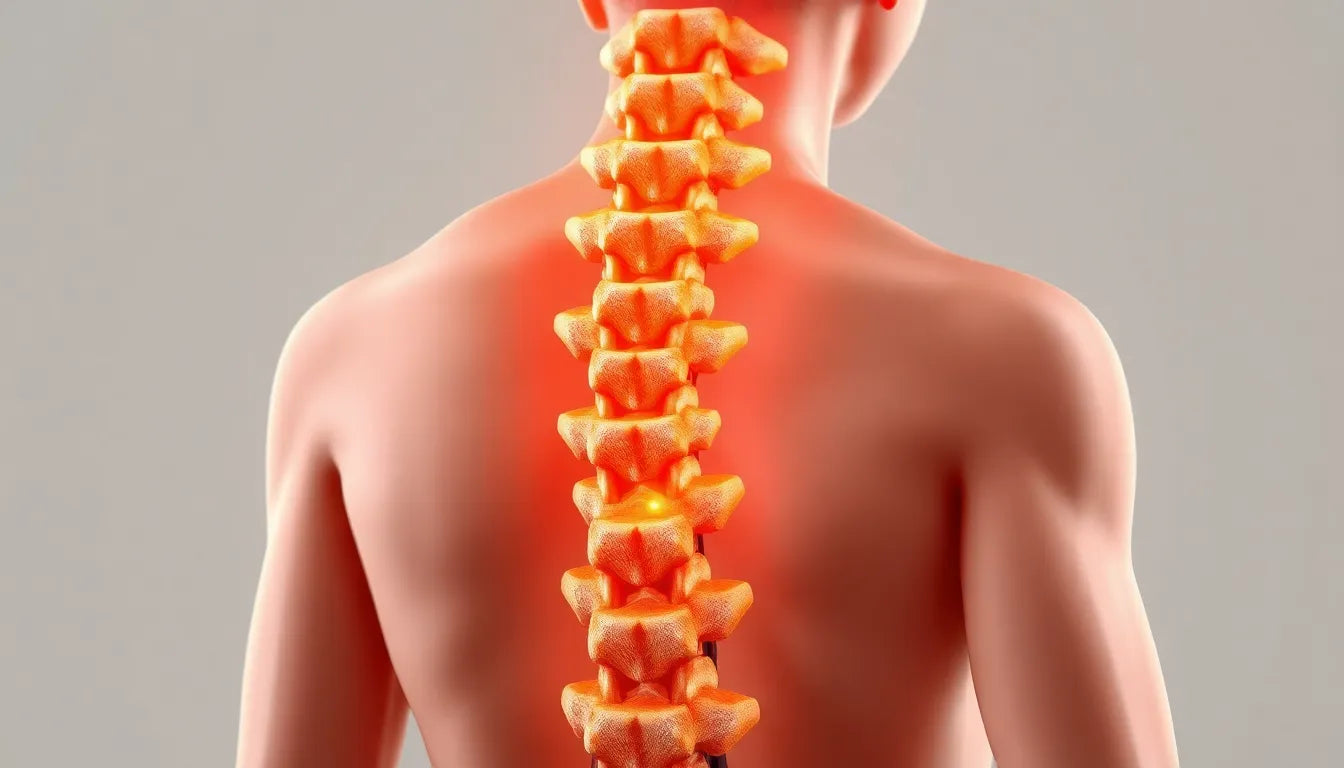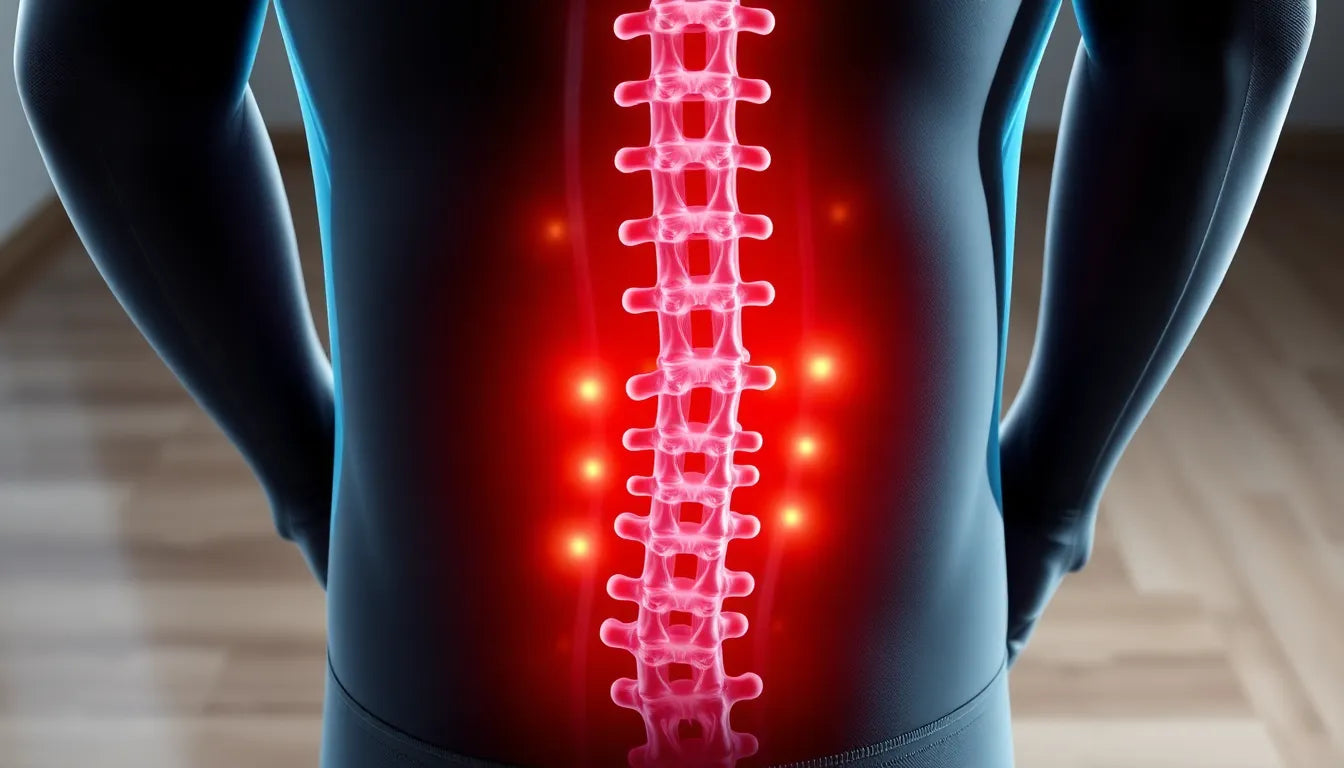Lower back pain is a common ailment that affects millions of people worldwide, often disrupting daily activities and diminishing quality of life. Among the various causes of lower back pain, a herniated disc at the L4/L5 level is particularly prevalent. This specific condition can lead to significant discomfort and mobility challenges, making it a topic of concern for many individuals seeking relief.
Understanding the L4/L5 herniated disc
A herniated disc, often referred to as a slipped or ruptured disc, occurs when the soft inner gel of an intervertebral disc pushes through a tear in its tougher outer layer. This can lead to irritation or compression of nearby nerves, resulting in pain and other symptoms. The L4/L5 region of the spine, located in the lower back, is a common site for disc herniation due to the significant amount of stress and movement it endures.
The lumbar spine, or lower back, consists of five vertebrae labeled L1 through L5. These vertebrae are separated by intervertebral discs, which act as cushions to absorb shock and provide flexibility to the spine. The L4/L5 disc plays a crucial role in supporting the lower back and is particularly susceptible to injury due to its location and the mechanical demands placed upon it.
Symptoms and challenges of L4/L5 herniated disc
Individuals with an L4/L5 herniated disc may experience a range of symptoms that can vary in intensity. Common symptoms include persistent lower back pain, leg pain often referred to as sciatica, numbness, tingling, and muscle weakness. These symptoms can significantly impact mobility, making it difficult to perform everyday tasks such as walking, bending, or lifting.
The challenges posed by an L4/L5 herniated disc extend beyond physical discomfort. The condition can affect one's ability to work, engage in recreational activities, and maintain an active lifestyle. As a result, finding effective relief and management strategies is essential for improving quality of life and restoring normal function.
In the subsequent sections, we will delve deeper into the causes and risk factors associated with L4/L5 herniated discs, as well as explore various treatment options available to alleviate pain and enhance recovery. By understanding the intricacies of this condition, individuals can take informed steps towards finding relief and regaining control over their health and well-being.
Causes and risk factors of L4/L5 herniated disc
The L4/L5 herniated disc is often the result of a combination of factors that contribute to the degeneration and eventual rupture of the intervertebral disc. One of the primary causes is age-related degeneration. As we age, the discs in our spine naturally lose water content, becoming less flexible and more prone to tearing or rupturing. This degeneration process can be accelerated by certain lifestyle choices and physical activities.
Improper lifting techniques are another common cause of L4/L5 herniated disc. Lifting heavy objects without using the correct posture can put excessive strain on the lower back, leading to disc injury. Additionally, traumatic injuries such as falls or accidents can also cause a disc to herniate, especially if the spine is subjected to sudden, forceful impact.
Several risk factors can increase the likelihood of developing an L4/L5 herniated disc. Obesity is a significant risk factor, as excess body weight places additional stress on the lumbar spine, increasing the risk of disc herniation. A sedentary lifestyle also contributes to the weakening of muscles that support the spine, making it more susceptible to injury. Furthermore, there is evidence to suggest that genetic predisposition may play a role, with some individuals being more prone to disc degeneration and herniation due to inherited traits.
Non-surgical treatment options
For those suffering from an L4/L5 herniated disc, non-surgical treatments are often the first line of defense in managing pain and promoting healing. Non-steroidal anti-inflammatory drugs (NSAIDs) are commonly used to reduce inflammation and alleviate pain. These medications can provide relief from the discomfort associated with a herniated disc, allowing individuals to engage in other therapeutic activities.
Physical therapy is another critical component of non-surgical treatment. A physical therapist can design a personalized exercise program aimed at strengthening the muscles of the lower back and improving flexibility. These exercises can help stabilize the spine, reduce pain, and prevent further injury. In addition to exercise, physical therapists may use modalities such as heat, ice, and electrical stimulation to manage pain and promote healing.
Lifestyle modifications are also essential in managing an L4/L5 herniated disc. Weight management can significantly reduce the stress on the lower back, while ergonomic adjustments in the workplace and at home can help prevent further strain. Regular exercise, even in the form of low-impact activities like walking or swimming, can keep the spine healthy and reduce the risk of future herniation.
Exploring alternative therapies
In addition to conventional treatments, some individuals find relief through alternative therapies. Chiropractic care is one such option, where chiropractic adjustments aim to realign the spine and reduce nerve pressure. While some patients report improved symptoms, it is essential to consult with a healthcare professional to determine if chiropractic care is appropriate for your specific condition.
Acupuncture is another alternative therapy that has gained popularity for its potential to relieve pain associated with herniated discs. By inserting thin needles into specific points on the body, acupuncture is believed to stimulate the body's natural healing processes and reduce pain. Though scientific evidence supporting its efficacy is mixed, many individuals find acupuncture to be a beneficial complementary treatment.
In conclusion, understanding the causes and risk factors of an L4/L5 herniated disc is crucial in preventing and managing this condition. Non-surgical treatments, including NSAIDs, physical therapy, and lifestyle changes, offer effective ways to alleviate pain and promote recovery. Additionally, alternative therapies like chiropractic care and acupuncture provide further options for those seeking relief. By exploring these various treatment strategies, individuals can work towards regaining control over their health and improving their quality of life.
Surgical options for L4/L5 herniated disc
When non-surgical treatments do not provide sufficient relief for an L4/L5 herniated disc, or if there is significant nerve damage, surgical intervention may be considered. There are both minimally invasive and traditional surgical options available, each with its own benefits and considerations.
Minimally invasive procedures
Minimally invasive surgeries, such as microdiscectomy and laser disc repair, are designed to alleviate pain and restore function with less impact on the body. A microdiscectomy involves removing a portion of the herniated disc that is pressing on the nerve root, often resulting in immediate pain relief. Laser disc repair uses focused laser energy to remove or shrink the herniated portion of the disc, reducing pressure on the nerves.
The benefits of minimally invasive procedures include smaller incisions, reduced muscle trauma, and quicker recovery times compared to traditional surgeries. However, as with any surgery, there are risks such as infection, bleeding, or nerve damage. Recovery expectations vary, but patients typically experience less postoperative discomfort and a faster return to daily activities.
Traditional surgery
In some cases, more traditional surgical options like discectomy or spinal fusion may be necessary. A discectomy involves the removal of the herniated disc material to relieve pressure on the spinal nerves. Spinal fusion, on the other hand, is used to stabilize the spine by fusing two or more vertebrae together, often following the removal of a disc.
While traditional surgeries can be effective, they generally involve longer recovery periods and a greater impact on the surrounding tissues. It is crucial for patients to discuss the potential benefits and risks with their healthcare provider to determine the most appropriate surgical approach for their specific condition.
Conclusion
Finding relief from an L4/L5 herniated disc involves understanding the condition and exploring a range of treatment options. Whether through non-surgical methods, alternative therapies, or surgical interventions, a comprehensive evaluation and personalized treatment plan are essential. Consulting with healthcare professionals ensures that individuals receive the most suitable care for their specific needs, ultimately improving their quality of life and restoring normal function.
Frequently Asked Questions
What are the symptoms of L4-L5 disc herniation?
Symptoms include lower back pain, leg pain often referred to as sciatica, numbness, tingling, and muscle weakness.
How is L4-L5 disc herniation diagnosed?
Diagnosis typically involves a physical examination, a review of medical history, and imaging tests such as MRI or CT scans to confirm the presence and extent of the herniation.
What are the best non-surgical treatments for L4/L5 herniated disc?
Non-surgical treatments include NSAIDs for pain management, physical therapy to strengthen the back, lifestyle changes like weight management and ergonomic adjustments, chiropractic care, and acupuncture.
When should surgery be considered for L4/L5 herniated disc?
Surgery may be considered if conservative treatments fail to relieve symptoms or if there is significant nerve damage that threatens long-term function.
Can L4/L5 herniated disc heal on its own?
Some cases of L4/L5 herniated disc may improve with time and conservative treatment, but others may require medical intervention to prevent further complications.


















